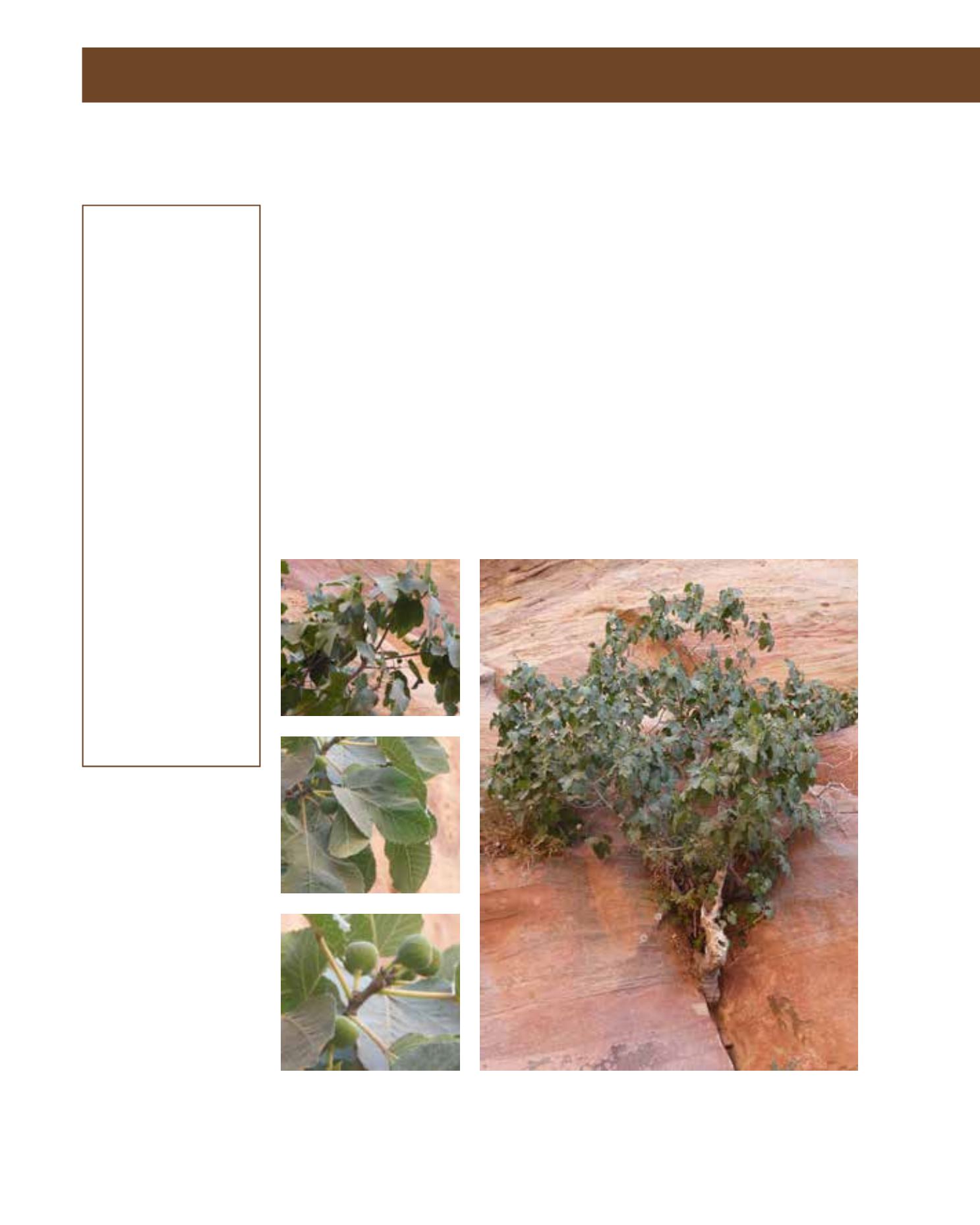

GENERAL
Origin
:
Mediterranean,
sub-tropical,
tropical
Humidity
:
semi-arid, semi-
humid, extremely
humid
Propagation :
sowing and
pricking out,
cuttings
Maintenance :
moderate
CONDITIONS
Urban climate :
resistant
Dessication :
resistant
Stagnant water :
resistant
Irrigation
:
low
Salinity/ppm :
high (3500 ppm)
Hardiness
:
-6°C
SHAPE
Type
:
tree, shrub
Height
:
10 m
Spread
:
8 m
Foliage
:
evergreen, semi-
evergreen
FLOWER
Colour
:
green
Size
:
0.5 cm
Period
:
May - June
FRUIT
Type of fruit :
drupe(fleshy/
juicy)
Fruit size
:
2 cm - 3 cm
Toxicity
:
edible, fruit
The Wild Fig (jumais or hammat in Arabic) is related to the cultivated fig tree and can be found
in sheltered ravines and outcrops in many places in the ArArriyadh region. The tree grows ra-
pidly to 5 metres in height with many branches from the bottom of the trunk. The dense foliage
is comprised of simple, leathery, dark-green leaves up to 10 cm long. Small flowers appear from
spring to early summer followed by tiny figs, which are edible and yellow, when ripe. The fruit
also has medicinal properties. F. pseudosycomorus grows on rocky cliffsides, where it sends out
long roots. Extremely drought-tolerant, it is also to be found at the foot of slopes in gravelly
sands. The tree has a low tolerance to salinity. Propagation is by seed and cuttings. The Wild Fig
is browsed by camels, so that many trees are stunted and cropped down to a low bush, where
camels have reached them. F. pseudo-sycomorus has landscape value for planting on rocky slopes.
It requires very little maintenance and the occasional deep watering in summer will improve the
appearance of its foliage
149
Ficus pseudosycomorus,
Moraceae
Sycamore Fig,
Wild Fig, jumais, hammat
















